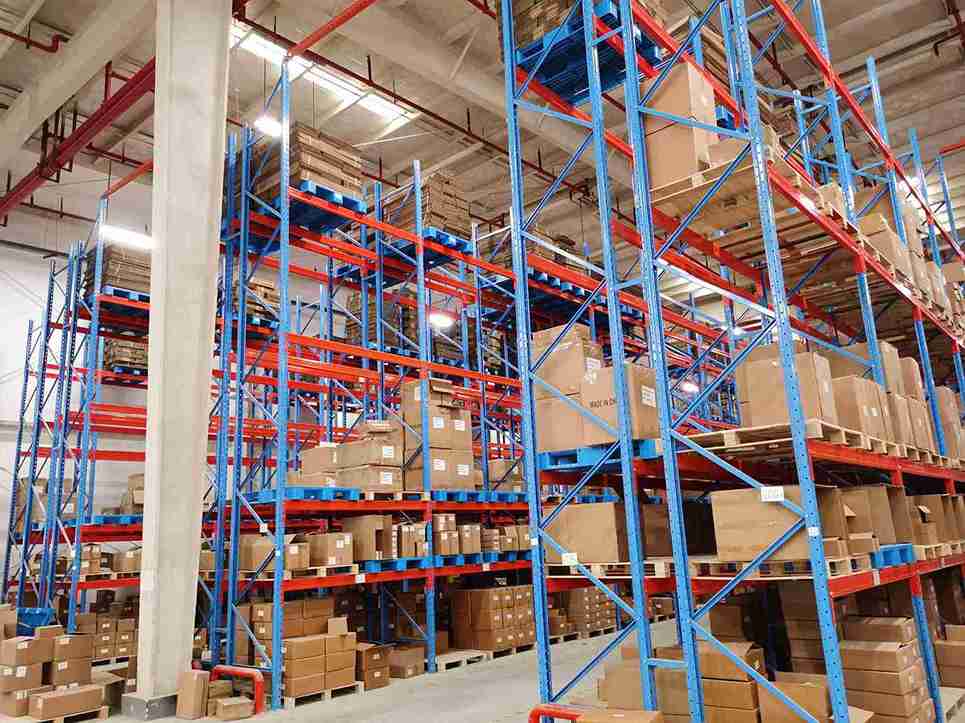📐 "First 50 Enterprise Queries Get Custom 3D Warehouse Design" Plan

Introduction
Proper rack height configuration for industrial racking is the backbone of an efficient, safe, and high-capacity warehouse. Whether dealing with selective pallet racks, drive-in systems, or cantilever storage, the right rack height configuration for industrial racking ensures seamless operations, OSHA compliance, and maximum space utilization.
This guide dives deep into the best practices for rack height configuration for industrial racking, covering safety regulations, structural considerations, and advanced optimization techniques. Warehouse managers, logistics planners, and safety inspectors will find actionable insights to enhance storage efficiency while minimizing risks.

1. Why Rack Height Configuration for Industrial Racking Matters
The rack height configuration for industrial racking directly impacts:
-
Storage Density – Proper vertical spacing maximizes cubic capacity.
-
Forklift Accessibility – Incorrect heights slow down operations.
-
Load Stability – Overstacking leads to collapses and product damage.
-
Regulatory Compliance – OSHA and ANSI standards mandate specific clearances.
A well-planned rack height configuration for industrial racking system can increase storage by 30% or more while reducing workplace accidents.
2. Key Factors in Determining the Best Rack Height Configuration for Industrial Racking
2.1. Warehouse Clear Height & Structural Limitations
-
The maximum usable height is determined by ceiling clearance, minus sprinklers and lighting.
-
Facilities with high-bay storage (30+ feet) require specialized forklifts.
2.2. Forklift Specifications & Operational Workflow
-
Standard forklifts typically reach 10-20 feet, while VNA forklifts extend to 40 feet.
-
The rack height configuration for industrial racking must align with lift capacity.
2.3. Load Characteristics & Weight Distribution
-
Heavier pallets should be stored on lower levels for stability.
-
Beam deflection calculations prevent overloading in high-tier storage.
2.4. Storage System Type & Accessibility Needs
-
Selective racks favor lower rack height configurations for easy access.
-
Drive-in racks prioritize density over selectivity, requiring taller setups.
3. OSHA & ANSI Compliance in Rack Height Configuration for Industrial Racking
Ignoring safety standards in rack height configuration for industrial racking leads to fines, injuries, and operational shutdowns.
3.1. Minimum Vertical & Horizontal Clearances
-
6-inch minimum between top load and ceiling (OSHA 1910.176).
-
3-inch clearance between pallets and beams to prevent instability.
3.2. Load Capacity & Upright Frame Strength
-
Each rack height configuration for industrial racking must account for:
-
Uniformly Distributed Load (UDL) limits.
-
Point load stress on beams.
-
-
Overloading top shelves is a leading cause of rack collapses.
3.3. Seismic & Wind Load Considerations
-
Facilities in earthquake zones require additional cross-bracing.
-
Taller racks (25+ feet) need wind load reinforcement in open yards.
4. Step-by-Step Process for Optimal Rack Height Configuration for Industrial Racking
4.1. Conduct a Warehouse Space Assessment
-
Measure clear ceiling height with laser tools.
-
Deduct sprinkler, lighting, and HVAC obstructions.
4.2. Determine the Ideal Number of Storage Levels
-
Standard pallet racks (48”x40”) work best with 5-7 tiers.
-
High-density warehouses can utilize 10+ levels with AS/RS systems.
4.3. Select the Right Upright Frames & Beam Adjustability
-
Roll-formed racks allow flexible rack height configuration for industrial racking.
-
Structural racks support heavier loads at extreme heights.
4.4. Test Forklift Compatibility Before Finalizing
-
Run operational simulations to verify reach and maneuverability.
-
Ensure aisle width accommodates turning radius.
5. Best Practices for Safe & Efficient Rack Height Configuration for Industrial Racking
5.1. Use Adjustable Beam Levels for Future Flexibility
-
Slot-in designs allow quick reconfiguration as inventory needs change.
5.2. Implement Safety Enhancements
-
Wire mesh decking prevents falling items.
-
Column protectors reduce forklift collision damage.
5.3. Schedule Regular Rack Inspections
-
Bi-annual checks for beam deflection, upright damage, and load shifts.
-
Immediate repairs on any bent or misaligned components.
6. Advanced Techniques in Rack Height Configuration for Industrial Racking
6.1. Double-Deep & Push-Back Racking Systems
-
Increases storage density but reduces selectivity.
-
Requires specialized forklifts for deep reach.
6.2. Automated Storage & Retrieval Systems (AS/RS)
-
Robotic cranes enable ultra-tall rack height configurations (50+ feet).
-
Ideal for cold storage and high-throughput facilities.
6.3. Mezzanine Integration for Multi-Level Storage
-
Expands capacity without increasing rack height.
-
Best for small-item storage and order picking.
7. Common Mistakes in Rack Height Configuration for Industrial Racking
-
Ignoring forklift operational limits → Leads to inaccessible inventory.
-
Overloading top shelves → Increases collapse risks.
-
Neglecting seismic reinforcement → Catastrophic in earthquake zones.
8. Conclusion
The right rack height configuration for industrial racking transforms warehouse efficiency, safety, and storage capacity. By following industry best practices—measuring clear heights, complying with OSHA, and testing forklift compatibility—facilities can optimize their layouts for peak performance.
For custom racking solutions, consult with structural engineers and safety inspectors to ensure compliance and longevity.
Frequently Asked Questions (FAQs)
1. What’s the safest height for storing heavy pallets?
Heavier loads should always be placed on lower levels to prevent instability.
2. How does rack height impact forklift efficiency?
If racks exceed forklift max reach, operators waste time repositioning.
3. Can I modify rack heights after installation?
Yes, adjustable beam systems allow reconfiguration without full dismantling.
4. What’s the minimum clearance between racks and ceiling?
OSHA mandates at least 6 inches for sprinkler and safety compliance.
5. Do I need a permit for racks over 20 feet?
Local regulations vary—always check with municipal building codes.
By mastering rack height configuration for industrial racking, warehouses unlock higher efficiency, better safety, and greater ROI.




